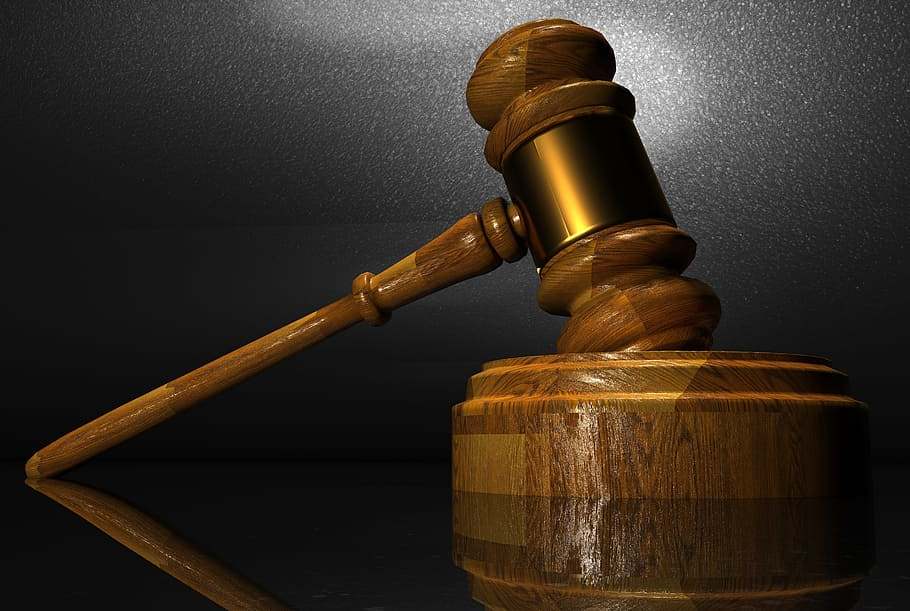(PONARS Eurasia Policy Memo) Although often perceived as a country with a horrendous state of justice, Ukraine in fact, is making some progress in this domain. According to the World Justice Project, the country advanced upward four ranks in 2019 in the Rule of Law Index and is now comparable with Romania and Bulgaria. Ukraine reached its historic maximum in 2019 in the Court Index of the European Business Association. Individual lawyers have also signaled that trials have become more competitive and civil and criminal cases have been inoculated against most interferences.
Despite some progress, regrettable systemic flaws make the pace of depoliticization of the Ukrainian judiciary remarkably uneven and notable pockets of political partiality persist. The trajectory of the Kyiv District Administrative Court (Okruzhnyi Administratyvnyi Sud mista Kyieva (KDAC)) is illustrative. KDAC was formed in the mid-2000s with the purpose of safeguarding citizens’ rights in public law disputes, but its judicial jurisdiction expanded and it became a formidable tool in the hands of corrupt officials. In particular, KDAC experienced politicization through a complex, five-component process involving both external stimuli and internal dynamics. Any of these aspects are prone to be reproduced unless the structural prerequisites of politicization are removed.
Sauntering Toward Judicial Independence
With the highly politicized Soviet judicial system as its starting point, Ukraine has been afflicted with a biased judiciary since its independence. Arguably, the lowest point was in 2011-2012, when former Prime Minister Yulia Tymoshenko and former Interior Minister Yuriy Lutsenko were sentenced to prison by “kangaroo courts” overseen by then-president Victor Yanukovych. After Yanukovych was evicted from office, some steps were taken to increase Ukraine’s judicial independence. In particular, in 2016, a constitutional amendment (in Article 126) and a law canceled a provision that judges appointed for the first time serve for a trial period of five years. The old provision, installed under Leonid Kuchma’s semi-authoritarian regime, meant that judges were, in effect, politically dependent. The 2016 law also granted the right to appoint new judges solely to the High Qualification Commission of Judges of Ukraine (HQCJ) and the High Council of Judges (HCJ). Most importantly, it annulled the rights of the executive and legislative branches to recall judges. Consequently, even members of the judiciary acknowledged that judges were becoming more politically independent.
A Court Against the Grain
However, judicial autonomy does not automatically mean a depoliticized judiciary. A look at KDAC rulings over recent months suggests they contain political inducements.
-
- It canceled the introduction of mandatory International Foundations of Medicine (IFOM) exams that the Cabinet of Ministers required for graduation in an attempt to reduce pay-for-diploma schemes.
-
- It blocked the dismissal of the head the State Service of Ukraine for Transport Safety.
-
- It considered a plea by the Kyiv mayor against the head of the Presidential Administration who is trying to strip the mayor of powers.
These three points are litigations between officials and governmental bodies and the court rulings are bound to have politically important repercussions. Notably, KDAC is also responsible for a number of verdicts explicitly political in nature. The following show overt anti-presidential (anti-Poroshenko) policy by KDAC.
-
- It barred Ulyana Suprun, a reform-minded technocrat, from becoming Minister of Health. Suprun tried to promote health care reforms but KDAC suspended her.
-
- It prohibited the implementation of the parliamentary bill that prescribed that the Ukrainian Orthodox Church-Moscow Patriarchate change its registration name to include the word “Russian.” The Russian Orthodox Church serves as a lever on Ukrainian politics and the Poroshenko administration decided that believers would be more attentive about political messages if affiliations and allegiances were better known, hence the desire to alter the name.
-
- It blocked the recruitment of a new head of the State Fiscal Service. This move aimed to keep an old head and political ally of some KDAC associates in office.
-
- It invited governmental agencies to launch impeachment proceedings against President Petro Poroshenko (a direct attack against him).
-
- It declared void the nationalization of PrivatBank, formerly part of oligarch Ihor Kolomoysky’s business empire (an attack against Poroshenko).
Granted, in any system, some court decisions are bound to have political repercussions. Yet, the case of KDAC is different. It is the same judicial body, KDAC, which is responsible for most of the politically significant and contentious rulings in contemporary Ukraine. Hardly any other court in Ukraine is politicized to a further extent. The judicial branch in present-day Ukraine is a mixture of players: most are depoliticized and a few outliers are over-politicized, but there are notable regularities in when and why KDAC takes its politically motivated decisions.
A Rogue Court in Five Chapters
1. Structural prerequisites. KDAC has smacked of ambiguity since its inception. Established for unclear reasons in November 2004 by Kuchma’s presidential decree, the court officially began functioning in January 2005. The democratic exhalation that followed the Orange Revolution provided the raison d’être for KDAC. Its mission was to be a bulwark for citizens against damages incurred from governmental officials and institutions. In July 2005, the parliament adopted the Administrative Justice Codex with Article 27, which places adjudication of all cases against the Cabinet of Ministers, the National Bank, or any other national institution within the exclusive jurisdiction of KDAC. The rationale behind the decision was to protect key national institutions from being paralyzed by regional courts. Instead, Article 27 threw public policy on the mercy of 49 KDAC judges. Since KDAC is a court of original jurisdiction, its rulings could technically be reviewed by an appellate court and a special body of the Supreme Court. However, higher courts tend to approve KDAC decisions. Thus, the structural prerequisites for politicization were met, and the stage was set for its further involvement in politics.
2. Political contamination. The next step toward KDAC’s further embattlement was its political contamination by politicians. This began to occur during the political crisis of October 2008 when the “Orange Coalition” of President Viktor Yushchenko and Tymoshenko split and the president tried to dissolve the parliament and hold new elections in order to undermine his rival’s support in the legislature. Tymoshenko’s party (BYuT) appealed to KDAC since, according to Article 27, presidential decrees were under its authority. When KDAC suspended his decree as unlawful, Yushchenko interpreted it as siding with the enemy and tried to disband the court itself. This started a protracted struggle over the legality of either action. The particularities of the confrontation are of little relevance now, unlike two significant outcomes. First, KDAC was haphazardly initiated into power politics. For some, like Judge Volodymyr Keleberda, this was a traumatic experience because the president and his allies attempted to ruin his career in retaliation for suspending the presidential decree. Consequently, KDAC judges grew more inclined to consider politics as a way to secure their future. Second, individual judges established or amplified their ties with politicians in order to have a say in politics. For instance, Keleberda drifted toward Andriy Portnov, then MP from BYuT, who actively supported him against assaults by the president.
3. Instrumentalization by the regime. The third aspect of KDAC’s politicization was its instrumentalization by the regime in 2010, when Yanukovych exploited the judicial branch to consolidate his semi-authoritarian rule. Yanukovych carried out a hostile takeover of the judiciary, relying upon notable members of the law community like Serhiy Kivalov, president of the National University Odesa Law Academy, and Andriy Portnov, who moved away from Tymoshenko once he was compensated with the position of Head of Department for Lawmaking and Judicial Reform. In cahoots with the HCJ, he packed the courts with his clients, and KDAC was no exclusion. The Yanukovych administration sat inexperienced judges; for instance, neither Judge Ihor Pohrebinchenko nor Judge Ihor Ishchuk had served as judges prior to their presidential appointments. Many, such as Judge Pavlo Vovk and Judge Ruslan Arsiriy, represented the Donetsk region, Yanukovych’s stronghold, and many, such as Judge Vovk, Judge Yevheniy Ablov, and Judge Keleberda, cultivated ties with Kivalov or Portnov. The regime used the unique prerogatives of KDAC to justify many of its decisions. The climax of KDAC instrumentalization occurred when the court first prohibited any contentious gatherings in downtown Kyiv during the Euromaidan and then when it ruled out that police should forcefully disperse citizens.
4. Formation of a stable ruling coalition. Surprisingly, the Yanukovych regime breakdown provoked no significant changes to KDAC’s jurisdiction or its staff. Instead, Poroshenko, after some consideration and even with the consent of the HCJ to dissolve the body, decided to keep the court intact. Presumably, the possibility of controlling this important political instrument proved too tempting. KDAC repaid in kind, hence a number of rulings advantageous to Poroshenko and his allies, such as the whitewashing of misdeeds by Interior Minister Arsen Avakov or the cloak of secrecy drawn over the income information of top functionaries at the Security Service of Ukraine. These kinds of dealings were but a continuation of old habits. However, on Poroshenko’s watch, the fourth important development in KDAC’s politicization occurred: the formation of a stable ruling coalition within the court apparatus.
This began under Yanukovych, when newly appointed judges started “scratching each other’s back” to cut lucrative deals like receiving grants of state-issued apartments and other perks. It took some time for a circle of associates to develop, but there is little doubt that since March 2015, when 45 out of 46 KDAC judges elected Vovk as head of the KDAC, a close group of seven judges effectively control the legal proceedings and the decisionmaking of the KDAC. This group consists of Vovk, Keleberda, Ablov, Arsiriy, Oleksiy Ohurtsov, Pohrebinchenko, and Viktor Shulezhko. The first three individuals assumed administrative office in the court apparatus. Collectively, the seven judges routinely tamper with the automatized case assignment system to manage the preference of trials. As a result, a conspiratorial sense of community holds the ruling coalition together.
5. Sense of independent agency. The avalanche of politically motivated rulings taken by KDAC exemplifies the last component of its politicization: the sense of independent agency. The politicized KDAC verdicts cited above share two important features: they were ruled after 2017 and went in direct opposition to the policy of the Poroshenko administration.
In 2017, Judge Vovk suffered a personal humiliation when his attempt to become a Supreme Court judge failed due to objections by the Public Integrity Council, a special body designed to bar elevation to higher judgeship for contenders implicated in corruption. This was around the same time that Poroshenko toyed with dissolving KDAC. Under the dual assault against his person and his institution, Vovk adopted a confrontational course of action. His coalition grew emboldened between the first and the second rounds of the 2019 Ukrainian presidential election, when it became apparent that Poroshenko would leave office. Around this time, KDAC issued its most controversial rulings. Vovk publicly threatened the outgoing president with incarceration. One can speculate whether he and his associates acted out of vindictiveness, genuine rejection of presidential reforms, or efforts to endear themselves to the new regime. It is, however, undeniable that at that moment in time, the KDAC was a political actor with stakes in the game and strategies for playing.
At the critical juncture of regime change, when both branches were in transit due to Ukraine’s presidential and parliamentary elections this year, Vovk and his associates made their boldest move yet by trying to take the entire judiciary under their control. They orchestrated a careful campaign to dismiss several HQCJ members with the goal of packing that body, which is responsible for the appointment of new judges for limitless terms, with their clients. Simultaneously, they made efforts to put their allies in the HCJ, the institution that can remove judges for misconduct. These moves were in retaliation for HQCJ’s intention to examine the fitness of KDAC judges to occupy their posts. The ensuing and ongoing efforts by the Attorney General’s office under Ruslan Ryaboshapka to prosecute Vovk and his associates has yielded no results so far. Initially, Vovk left his office only to be replaced by his ally Keleberda, and later the HCJ rejected a plea to strip him of his judgeship.
Conclusions
The situation with KDAC remains both menacing and unresolved. It threatens the prospects of democracy in Ukraine because KDAC is a “selectorate” in its purest form: a tiny constellation of actors free from most forms of public control making decisions of significance that affects every citizen. Institutionally, KDAC enjoys unrestricted influence over the executive and the legislative branches because it is controlled only by higher courts. Its recent actions toward the HQCJ and HCJ clearly testify that the KDAC collective seeks a certain amount of unaccountability.
It is unresolved because although President Volodymyr Zelensky assumed power vociferously criticizing his predecessor’s failure to conduct a consistent reform of the judiciary, his own ideas and courses of action on the matter are undetermined. With the Public Integrity Council referring to the recent KDAC scandals as activities of “Mafiosi judges” and Attorney General Ryaboshapka calling for the reorganization of KDAC, there are clearly some actors eager to mend KDAC. Still, there is evidence of cooperation between Zelensky’s Chief of Staff Andriy Bohdan, Director of State Bureau of Investigations of Ukraine Roman Truba, and Andriy Portnov, the same former deputy in the Yanukovych administration. This trio can machinate to block any moves against KDAC staff. Besides, with signs that Kolomoysky, ex-owner of PrivatBank, enjoys considerable and well-known influence over Zelensky, it is doubtful that the president would dismantle the machine that does some work to Kolomoysky’s advantage. The broader picture also argues against optimism: in November 2019, Zelensky signed a law on judicial reform that was immediately flagged as containing some controversial aspects by top European officials for its effects on the independence of the judiciary. For example, it offered new qualification and court-cleaning terms regarding top judges, as well as new stipulations about dismissing judges, particularly at the HCJ, which subsequently blocked the law.
The five components of KDAC’s current political status suggest that the best way to respond to the challenges it poses to society is to eliminate the structural prerequisites for judicial politicization. The other factors are likely to reemerge if KDAC keeps its unique prerogatives because politicians and officials will assuredly try to contaminate and instrumentalize it—a minuscule body of magistrates holding the capability to block political decisionmaking.
Ivan Gomza is Research Professor of Public Policy and Governance at the Kyiv School of Economics.
[PDF]
Homepage image credit.
Memo #: 629
Series: 2











